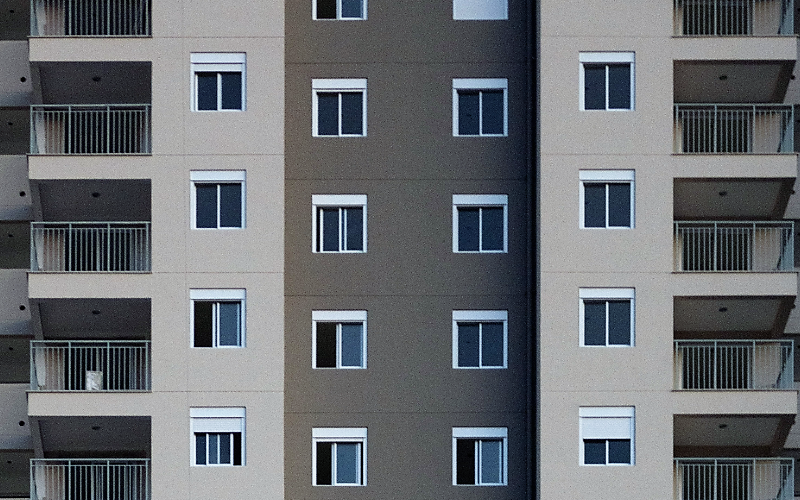Electrical safety
This guide covers social landlords’ responsibilities for electrical safety, including communal areas, such as, entrance halls and foyers, lifts and stairwells, corridors and landings, as well as external areas, such as parking and refuse areas.

Electrical safety – Q&A briefing (updated November 2020)
Q. How does Electrical safety relate to the new Building Safety Bill?
Electrical safety is one of the factors that will need to be taken into account when developing the Building Safety case for each higher-risk building under the proposals in the Building Safety Bill. This will involve landlords assessing electrical safety for each higher-risk building as well as ensuring compliance across all its stock for electrical safety.
Q. What should social landlords do?
They should:
- appoint Building Safety Managers for each higher-risk building
- ensure that they have systems that will record the risks from electrical safety and keep these risks updated for each higher-risk building as well as having systems to record compliance for electrical safety across all their stock.
Q. Where can social landlords find more information on the Building Safety Bill?
The NHMF Best Practice website has detailed Q&A briefing on the Building Safety Bill.
Legislation, statutory requirements and standards
Landlords have a legal duty to ensure that their rental property, and any electrical equipment provided, is safe before a tenancy begins and throughout its duration. This involves:
-
Ensuring the electrical installation and equipment is safe when a property is first let
-
Maintaining the electrical installation
-
Carrying out regular visual checks of the electrical installation
-
Inspecting the electrical installation periodically
-
Keeping records of inspections and certified installations
-
Complying with Part P of the Building Regulations for electrical installation work
In England and Wales the main legislation covering landlords’ duties in relation to providing and maintaining properties is the Landlord and Tenant Act 1985, Sections 8 and 11. Part P of the Building Regulations requires that all electrical installation work undertaken in a home apart from some minor types of work should either be notified to a building control body or be carried out by a competent person, registered for Part P.
BS 7671 (IET Wiring Regulations) sets the standards for electrical installation in the UK. The IET co-publishes BS 7671 with the British Standards Institution (BSI) and is the authority on electrical installation. The 18th Edition IET Wiring Regulations (BS 7671:2018) was published in July 2018. All new electrical installations will need to comply with BS 7671:2018 from 1st January 2019.
In Scotland, landlords’ duties are set out in the Housing (Scotland) Act 2006, section 14 (Landlord’s duty to repair and maintain). From 1 December 2015 landlords are required to ensure that regular electrical safety inspections are carried out by a competent person. This electrical safety inspection has two separate elements:
-
An Electrical Installation Condition Report (EICR) on the safety of the electrical installations, fixtures and fittings, and
-
A Portable Appliance Test (PAT) on portable appliances.
The Scottish Building Regulations also control certain types of electrical installation work.
In Northern Ireland the Department for Social Development regulates registered housing associations under the Regulatory Framework for Registered Housing Associations in Northern Ireland 2006.
Enforcement
The HHSRS under the Housing Act is enforced by local authorities, for category 1 hazards an improvement notice will be served or, in more extreme cases, a prohibition order may be served. The Act gives local authorities powers of access for the purposes of inspecting to see if a category 1 or 2 hazard exists. Building Regulations are enforced by the Building Control Body (either local authority building control or a private-sector Approved Inspector).
Housing regulators
In England, the Regulator of Social Housing (RSH), requires registered providers to comply with its Regulatory Standards. On 1 October 2018 the RSH became a standalone public body, independent from the Homes and Communities Agency (HCA). On 11 January 2018, the HCA’s non-regulation arm adopted its new trading name Homes England. Managing electrical safety is covered by the Home Standard that requires meeting all statutory requirements for the health and safety of occupants.
In Wales, all social landlords are required to meet and maintain the Welsh Housing Quality Standard (WHQS) as soon as possible, but in any event no later than 2020. In relation to electrical safety, landlords are to ensure electrical lighting and power installations are checked and certified safe by an appropriately qualified person at least every 10 years as a minimum. It also includes recommendations for the minimum number of electrical sockets in different rooms.
In Scotland, social landlords are required to meet the minimum Scottish Housing Quality Standard (SHQS). Meeting the SQHS includes compliance with the Technical Guide for healthy, safe and secure homes, requiring safe electrical systems. The Scottish Housing Regulator expects compliance with all statutory and regulatory obligations including electrical safety.
In Northern Ireland, the Department for Social Development regulates registered housing associations under the Regulatory Framework for Registered Housing Associations in Northern Ireland 2006. Regulatory Standard 3.3 states that housing associations must develop, manage and maintain good-quality homes that seek to meet people’s needs and preferences now and in the future. This includes meeting the Decent Homes Standard and compliance with all statutory and regulatory obligations including electrical safety.
Compliance – good and efficient practice
HSE provide advice on electrical safety and testing in the following publications:
-
HSE INDG236: Maintaining portable electric equipment in low-risk environments
-
HSE INDG354: Safety in electrical testing at work and Electrical inspection and testing
-
HSE HSR25 ‘The Electricity at Work Regulations 1989: Guidance’
-
HSENI publish guidance on electrical safety
The Institution of Engineering and Technology’s (IET) website provides an overview of the main changes within the 18th Edition IET Wiring Regulations. This list is not exhaustive as there are many smaller changes throughout the book not included in the overview. Electrical Safety First has also published guidance intended for use only by electrically competent persons. It covers:
- New, rewired and similar installations
- Inspection, testing, certification and reporting.
Electrical Safety First provides advice on landlords’ electrical safety obligations, including downloadable guides on electrical safety in England & Wales and in Scotland. These guides recommend periodic testing of rental properties at least every five years or at change of tenancy. The IET Guidance Note 3 recommends maximum intervals between periodic testing but the maximum interval is not set out in legislation. The frequency should be determined by the landlord in conjunction with its contractor, taking account of the overall assessment of the existing installations, maintenance regime and the residents. Any works classed as C1 or C2 should be completed before an installation can be passed as satisfactory during an inspection. Electrical Safety First also publishes a downloadable Landlords’ Interim Checklist to record electrical checks.
While most landlords carry out portable appliance testing (PAT), the Health and Safety Executive (HSE) explain it is not compulsory but employers are required to ensure that electrical equipment is maintained in order to prevent danger. It recommends taking a risk-based approach, considering the type of equipment and what it is being used for. If it is used regularly and moved a lot e.g. a floor cleaner or a kettle, testing (along with visual checks) can be an important part of an effective maintenance regime. Most electrical safety defects can be found by visual examination but some types of defect can only be found by testing. However, it is essential to understand that visual examination is an essential part of the process because some types of electrical safety defect cannot be detected by testing alone.
Changes to electrical wiring regulations
-
What is happening to the Electrical Wiring Regulations?
The 18th Edition IET Wiring Regulations (BS 7671:2018) were published on 2nd July 2018. All new electrical installations will need to comply with BS 7671:2018 from 1st January 2019.
-
What are the main changes in the 18th edition?
The Institution of Engineering and Technology’s (IET) website provides an overview of the main changes within the 18th Edition IET Wiring Regulations. This list is not exhaustive as there are many smaller changes throughout the book not included in the overview.
Electrical Safety First has also published guidance intended for use only by electrically competent persons. It covers:
- New, rewired and similar installations
- Inspection, testing, certification and reporting
-
When will the new 18th edition come into force?
The new 18th edition will come into force on 1st January 2019.


